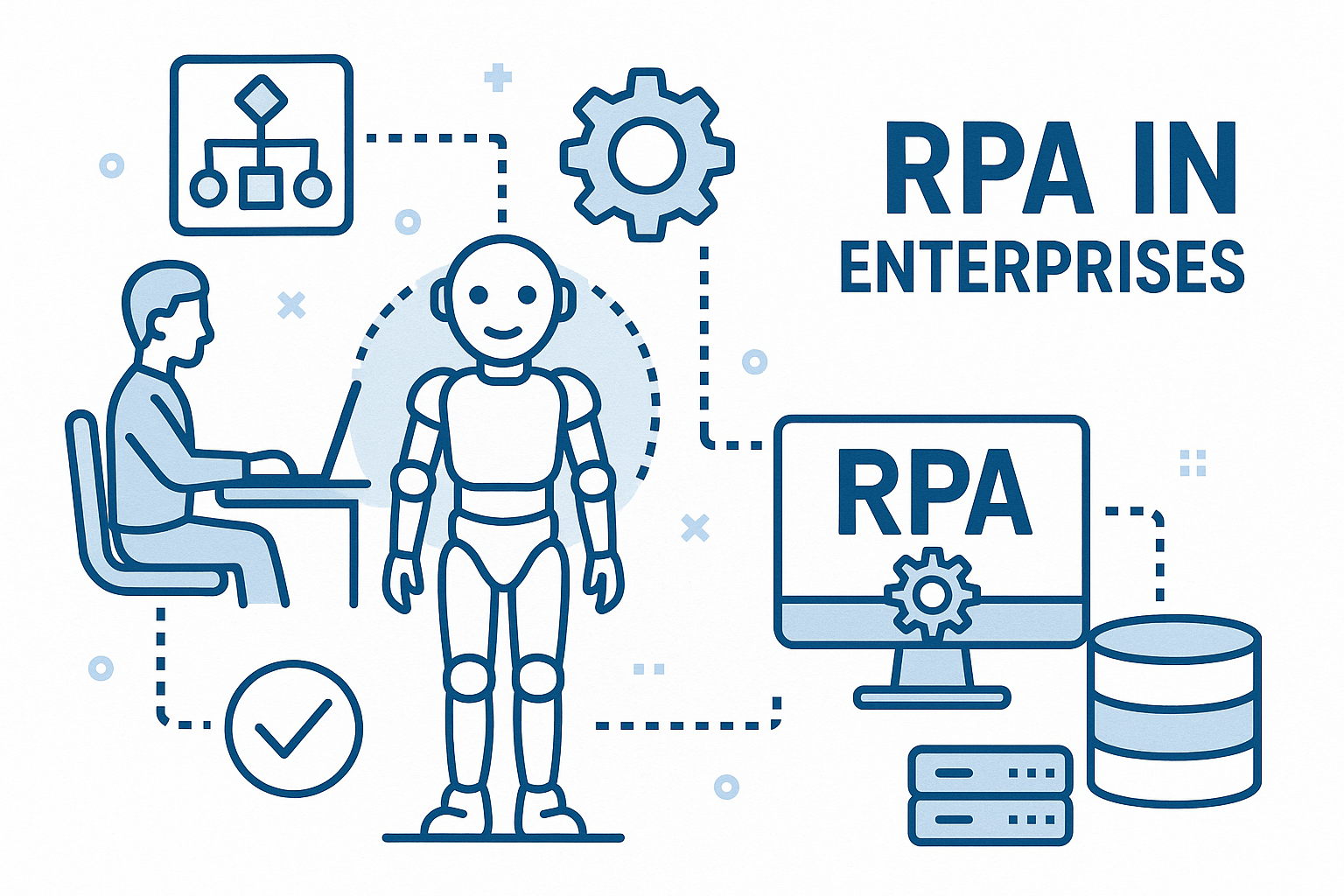Automating Repetition, Amplifying Human Potential
What Is RPA and Why Now?
Robotic Process Automation (RPA) uses software bots to mimic human actions like data entry, file transfers, or form filling—without changing existing systems. It’s ideal for high-volume, rule-based tasks.
Why It Matters:
“RPA is the bridge between legacy systems and digital speed.”
Key Business Drivers for RPA
Cost Reduction: Bots work 24/7 with zero fatigue
Speed and Accuracy: Near-instant execution, zero human error
Compliance: RPA logs every action, supporting audits
Scalability: Easily scaled during business surges
Employee Empowerment: Frees teams from repetitive drudgery
Enterprise Use Cases
Finance & Accounting
Invoice processing
Payroll execution
Bank reconciliations
HR Operations
Employee onboarding/offboarding
Leave/benefit administration
Customer Service
Ticket routing and resolution
Real-time order updates
IT & Compliance
Password resets
Report generation
Regulatory submissions
Myths vs Reality
| Myth | Reality |
| RPA replaces all jobs | It augments work; most roles are enhanced |
| Only works with structured data | RPA + AI (like OCR or NLP) handles semi-structured data |
| It’s only for large enterprises | SMBs increasingly use low-code RPA tools |
Strategic Adoption Roadmap
Identify Candidates: Target repetitive, rules-based processes
Start Small, Scale Fast: Begin with a pilot, prove ROI
Select Right Tool: UiPath, Automation Anywhere, Power Automate
Governance & Security: Define roles, permissions, audit trails
Integrate with AI: Enable cognitive automation (e.g., reading emails, making decisions)
Conclusion
RPA is not just about automation—it’s about digital acceleration. Enterprises that strategically deploy RPA transform from doing digital to being digital, unlocking both efficiency and innovation in parallel.





